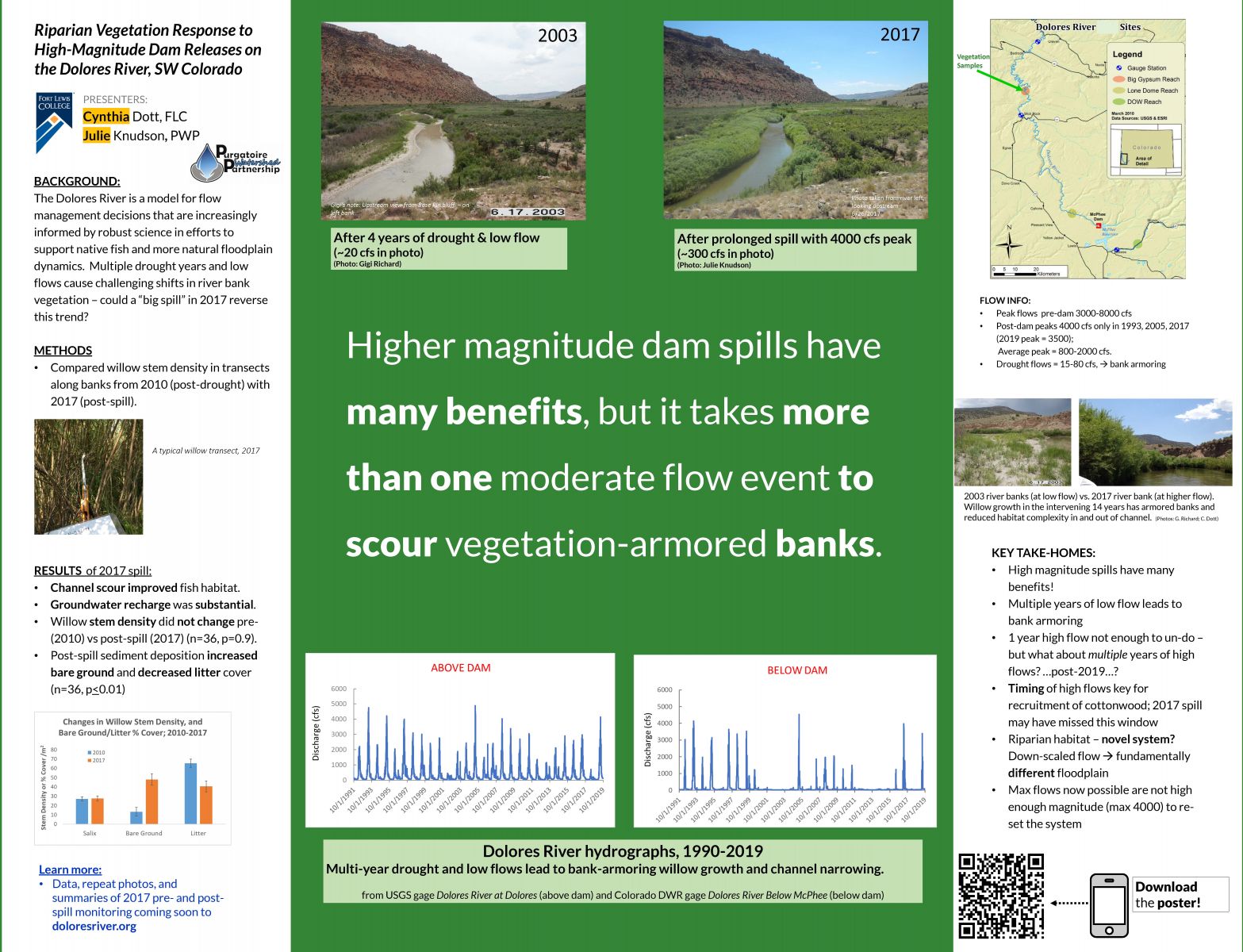Riparian Vegetation Response to High-Magnitude Dam Releases on the Dolores River, SW Colorado
Cynthia Dott1*, Julie Knudson2*
1 Department of Biology, Fort Lewis College, Durango CO USA; dott_c@fortlewis.edu
2 Purgatoire Watershed Partnership, Trinidad CO US; jknudson@purgatoirepartners.org
The Dolores River has a unique history of flow management, including truly unprecedented variation over the last three years due to large snowpack and historic drought in back-to-back years.
The Dolores provides habitat for rare native fish species and supports unique assemblages of native riparian vegetation. McPhee Dam, completed in 1985, reduced spring snowmelt-dominated high flows >50%, from 3000-8000 cfs pre-dam to 800-2000 cfs post-dam, but also raised late summer baseflows. In drought years, no peak occurs and flows vary from 15-80 cfs. Since dam completion, only three years have had sufficient snowmelt to allow releases from McPhee that reached magnitudes of 4000 cfs: 1993, 2005 and 2017 (the 2019 peak was nearly 3500 cfs). Because of reduced peak flows and multiple years of drought and low flow, the banks of the lower Dolores have become armored by vegetation – primarily willows (Salix exigua) and giant reed grass (Phragmites australis) and also tamarisk (Tamarix spp)—with simultaneous losses of bare ground and potential cottonwood seedling germination sites. In 2017 a high magnitude, long duration spill of 4000 cfs was planned to support native fish and riparian ecosystems below the dam. A consortium of scientists worked with managers to plan for pre- and post-spill monitoring. We hypothesized that bank scouring and vegetation removal would occur, along with sediment deposition on the floodplain. We re-occupied several sites below the dam to allow us to compare vegetation structure and composition pre- and post-peak flow release. Data collected in 2010 showed average willow stem densities of 34.3/m2 at one site below the dam compared to 1/m2 above the dam. In many reaches, mature cottonwoods have been in decline and new cottonwood establishment is limited. If the 2017 high flow was sufficient to emulate pre-dam floods, we predicted willow stem densities would decline, cover by bare ground would increase, and cottonwood seedlings would establish. Because of cooler than anticipated spring temperatures, the high flow release was shortened and 4000 cfs flows were maintained for only 3 days, though the total duration of the spill was longer than expected. While we observed no significant changes in willow stem densities post-spill, we did see an increase in cover of bare ground. Timing of post-spill drawdown was apparently wrong for cottonwood seedling establishment on new open sites in 2017, but increased water table recharge due to high flows benefits established cottonwoods over the long run. The fact that 2017 was followed by the exceptional drought of 2018, and then another year of prolonged high discharge in 2019 is also likely to have long-term consequences for riparian habitat on the Dolores River.

